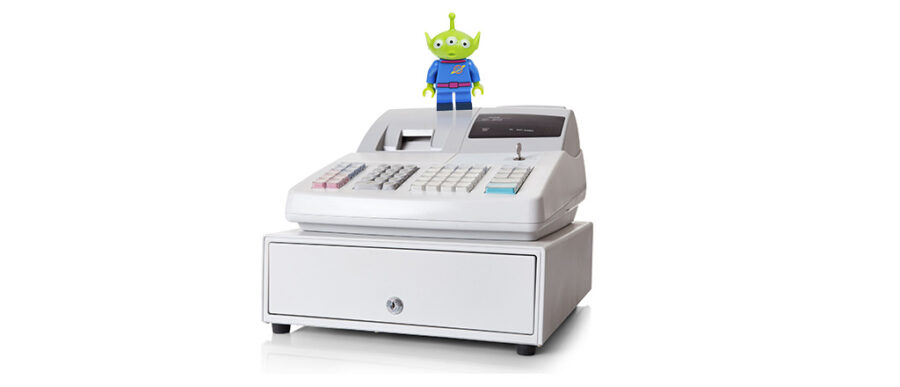If the road to hell is often paved with good intentions, the road to forgetting is most likely papered with reminders.
You tied a string around your finger as a reminder to return a phone call. Stuck a Post-it on your monitor so you wouldn’t forget to pick up milk on the way home. Or maybe you moved a book to a certain place on the bookshelf as a reminder to bring it for a friend.
In the smartphone era, we often rely on iOS, Google or Outlook to keep our schedules on track – but what if you need to remember something when your tech isn’t within easy reach?
To help conquer these challenges, Wharton operations, information and decisions professor Katherine Milkman is offering a slightly more offbeat solution. In the paper, “Reminders Through Association,” Milkman and co-author Todd Rogers of Harvard find that the key to remembering may actually be something completely unrelated to your intention – and something that stands out from the routine of everyday life.
“We have all these things in our lives that we mean to do that are really important to us – and yet we say that, and we fail to do them,” Milkman says. “That could be everything from getting a flu shot or signing up for a colonoscopy to sending flowers on Mother’s Day.”
“We have all these things in our lives that we mean to do that are really important to us – and yet we say that, and we fail to do them.”
Through a series of experiments, Milkman and Rogers found that follow through can be improved using what they call the “reminders through association” approach, which involves connecting your intention (for example, to mail a letter) with some sort of cue that will capture your attention. The cue has to stand out from everyday life – for example, the vase of flowers sitting on your desk that your partner just sent to celebrate Valentine’s Day.
“You want the [cue] to be distinctive,” Milkman notes. “You see something like your toothbrush every morning and it doesn’t trigger any sort of “huh” – this is usual, so you’re on autopilot…. Reminders by association need to be eye-catching, something that is going to prompt you to stop and pause – that’s why it does the trick in a way that paper reminders can’t.”
Aliens and Coupons
The research was useful to Milkman for problems she faces in her own life, balancing work with a new baby. “I call it ‘me-search’ – trying to solve my own problems, as well as the problems my friends and family and colleagues seem to have,” she says. “For me, an iPhone arrived, a baby arrived; in life you’re constantly connected and there’s always too much to do. My memory capacity has basically shrunk to zero at this point.”
In addition to people applying the reminders by association approach to their own lives, Milkman notes that businesses can also use it to prompt employees or customers. For example, managers could create an offbeat cue to signal to employees that performance evaluations or other reports are due.
“Imagine having a different cartoon character in the entryway each week and saying, “If you need to remember to do anything this week, Mickey will be your cue,” Milkman says.
Milkman’s favorite of the experiments that formed the paper was when she and Rogers tested how these offbeat cues could be used to prompt customers to use coupons. Research assistants passed out coupons to about 500 customers exiting a coffee shop in Cambridge, Mass. The coupons were good for $1 off a purchase the following Thursday. Each coupon was attached to a flyer — half the flyers told customers, “When you see the cash register … remember to use this coupon.” The other half included that same message, but also included a picture of a stuffed alien, which the flyer said would be sitting on the cash register on Thursday to remind patrons to use their coupons. When the designated Thursday came – with the alien on prominent display, 24% of the customers with the reminder by association “alien flyer” used their coupons, compared with 17% who received the standard flyer.
“Reminders by association need to be eye-catching, something that is going to prompt you to stop and pause – that’s why it does the trick in a way that paper reminders can’t.”
Procrastination vs. Forgetting
The research also showed that people may need these little reminders more than we think. In a different experiment, Milkman and Rogers offered participants the option of paying to get a reminder by association. They found that many people underestimated the potential costliness of their limited memory.
“People are overconfident in their ability to remember without tools,” Milkman says. “We found a large percentage of people leaving money on the table in that experiment. We thought, “Wow, amazing,” but really we do that all the time [in real life.]”
She noted that there are many studies about understanding people’s foibles that focus on procrastination or a lack of self-control, but fewer that examine the role of memory problems.
Another inspiration for the research was work Rogers had done working as an analyst at an institute that tried to use behavioral science to get out the vote. “They looked at what was the best way to design texting campaigns or phone campaigns or postcards,” Milkman says. While working on this, Rogers became very frustrated on how big of an issue forgetfulness was in terms of turnout.
Rogers was telling Milkman about the experience and mentioned that he wished he could have sent a juggler to every college dorm room in the country on Election Day and told people in advance that the entertainment was intended to remind them to get to the polls.
Few noticed, for example, the proliferation of signs that often sprout up on college campuses around elections: “They needed something much more eye-catching, something they can’t miss,” Milkman says. “I realized that this is much more general than trying to solve the problem of undergrads remembering to vote; the ‘stop you in your tracks’ solution can be used in other contexts and settings.”



